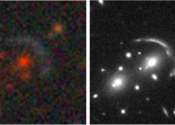Breakthrough in augmented reality contact lens: Curved LCD display holds widespread potential
The Centre of Microsystems Technology (CMST), Imec's associated laboratory at Ghent University (Belgium), announced today it has developed an innovative spherical curved LCD display, which can be embedded in contact lenses. ...









